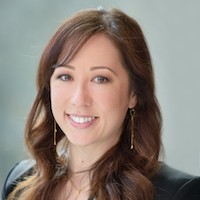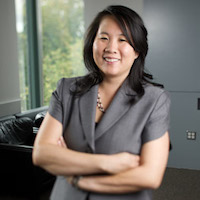Femme-BAs: How the UW Foster School of Business Wins with Women
B-School Search
For the latest academic year, we have 185 schools in our BSchools.org database and those that advertise with us are labeled “sponsor”. When you click on a sponsoring school or program, or fill out a form to request information from a sponsoring school, we may earn a commission. View our advertising disclosure for more details.
As human beings, we all want to feel seen, valued, and heard. Underrepresented groups often feel hyper-visible and invisible at the same time. How can we as a community create spaces for these voices to be heard so that all members can thrive?
Melissa Uyesugi, Associate Director of Diversity and Inclusion at the UW Foster School of Business
When you go to get your MBA, would you rather be taught how to run a business in 1999 or a business in 2019? Sadly, many business schools today still have demographics in the student body and faculty that seem pulled from the previous century. And, in their refusal to innovate, they’re not only helping to perpetuate a common large-scale injustice but they’re also failing to educate students in a contemporary way.
The gender gap is stark in the world of business. Only about 5 percent of the S&P 500 has a female CEO, despite 45 percent of that workforce being female. Across the board, women are paid less and promoted less often. This gender gap exists despite research repeatedly showing that companies that practice diversity and inclusion boast significantly higher earnings per share, a higher return on sales, and a higher operating margin. If businesses know this, shouldn’t business schools make their student bodies and faculty better reflect the demographics of our workforce?
Historically, the rankings of MBA programs have been based on a smattering of different factors: faculty publications, graduate job placements, applicant test scores, and increases in graduate salary. While these are important, they leave out something critical: a forward-thinking business school—just like a forward-thinking business—needs to take new research and best practices into account and prioritize diversity and inclusion.
Spotlight on the UW Foster School of Business
Consider the University of Washington’s Foster School of Business. Since 2000, the school has had the greatest rankings rise of any American business school. Currently, The Economist rates it as one of the 25 best in the world. None of this success, however, has come at the cost of diversity and inclusion. On the contrary, diversity and inclusion have increased in tandem with more traditional measures of success.
In 2018, the Financial Times listed Foster as the eighth-best American MBA program for women—putting it in the same territory as Wharton, Stanford, and Harvard. The student body is 41 percent female, over a third of the faculty is female, and the average salary increase for all graduates is over 100 percent.
In Foster’s eyes, the concepts of diversity and inclusion aren’t a sidebar; they’re core tenets of what it means to be an innovative and contemporary business school. That’s one reason why Foster has an administrative department specifically dedicated to diversity and inclusion.
How the Foster School of Business Promotes Diversity and Inclusion

“As a business school, it is our charge to educate and prepare MBA graduates to lead companies and organizations in our ever-shrinking global society,” says Melissa Uyesugi, associate director of diversity and inclusion at Foster. “How can we do this without an array of voices, experiences, and opinions at the table? This is at the heart of innovation.”
An icy logic already exists for the prioritization of diversity and inclusion in marketing: a company wants to sell its products to all demographics and doing that requires a company to accurately understand and represent those demographics in their products. There are clear operational benefits as well: diverse teams simply make better decisions. In the future, diversity and inclusion won’t just be a characteristic of profitable businesses, but a necessity. So how can a business school prepare its MBA students for this?
“Business schools can begin by identifying and critically examining the systems that are at play in their programs—systems like outreach and recruitment, the admissions process, scholarship awarding, orientation programs, curriculum, and classroom culture,” Uyesugi says. “A deeper examination of these systems often reveals a foundation based on inequity. This becomes evident by looking at the population and experiences of the student body and often answers the question: who was this system built for?”
In the last 20 years, Foster has been rebuilding its systems to serve and represent a broader demographic. The MBA program’s LEAD week, which marks the beginning of studies, now kicks off with explicit conversations about diversity and inclusion. The MBA curriculum now includes electives such as women in leadership, cross-cultural management, and diversity and inclusion.

“The MBA faculty work hard to find and incorporate cases that showcase a variety of types of leaders,” says Dr. Christina Fong, a principal lecturer of management and organization at Foster. “We also work to bring in guest speakers that celebrate the diversity within our community.”
Providing an equitable representation is one need, but reducing implicit bias is another. Toward the latter end, MBA faculty attend best practices forums where they review emerging research and learn about pedagogical techniques which can mitigate implicit bias in the classroom. One such technique has been instituting a randomized method of calling on students in the classroom; while cold calling can reinforce implicit biases, a randomly-generated system of calling on students can make students more engaged and promote better learning outcomes.
Another technique involves utilizing real-time polling software to allow students to contribute and participate without speaking up. Further integration with existing classroom software allows for students to record the proper pronunciation of their last name (so professors can listen and practice) and enter their preferred pronouns. These are functions of existing features: meaning the cost of implementation is practically nothing.
“We leverage technology to help us create inclusive learning communities,” Fong says.
Channeling available resources into an equitable and inclusive end is a theme at Foster and partnerships with the wider community have been key. The Forte Foundation, Management Leadership for Tomorrow, and the Consortium for Graduate Study in Management have all played a role in rewiring the circuitry of Foster in a more equitable and inclusive way.
“These partnerships have helped Foster gain a greater level of visibility with MBA candidates, but impacting outreach and recruitment is only a piece of what students need to be successful in a business school,” Uyesugi says. “Once they get here, paying attention to their psychosocial and cultural development is incredibly important. Finding and connecting with community, mentoring, co-curricular and community engagement and mental and physical wellbeing are vital to all MBA students, but especially important for marginalized populations.”
Foster also works internally to create development opportunities and “connective tissue” on campus. The Women in Business group focuses on building community, unpacking gender dynamics, and providing opportunities for personal networking. The school provides informal mentoring opportunities between graduate and undergraduate students. Students themselves have started and led a wellness task force to address rising concerns about mental and physical well-being.
“Programming here is largely student-led, and that means student voices are always part of the conversation,” says Jamie Young, who is an MBA candidate in the class of 2019 and also the 2018-2019 president of Foster’s MBA Women in Business Association. “If you have an idea of how something can be improved or an event you’d like to plan, here at Foster you have the ability to make it happen.”
Foster’s mentorship programs, alumni network, and corporate partnerships are, much like diversity and inclusion initiatives, designed to further empower the students. Leveraging tech, holding faculty sessions, and looking for ways to mitigate bias—it’s all in service of preparing a self-sufficient graduating class who can navigate the future with confidence. This reaches beyond gender, beyond race, and into the arena of thoughtful inclusion towards all students.
“When working with students (and colleagues), I also think it’s vitally important to move from a culture of transactional-space to one of relationship-space,” Uyesugi says. “As human beings, we all want to feel seen, valued, and heard. Underrepresented groups often feel hyper-visible and invisible at the same time. How can we as a community create spaces for these voices to be heard so that all members can thrive?”
The school is also looking outward to promote these ideas of diversity and inclusion. Foster is the location of the Consulting & Business Development Center where the goal is to leverage the power of students to support women and minority-owned businesses across the state. Since its inception in 1995, the center has generated over $210 million in revenue and retained over 200,000 jobs. In 2017, JPMorgan Chase partnered with the Center in its Ascend 2020 program, which seeks to replicate the success at Foster elsewhere. What’s being done at Foster is rapidly reaching the wider world.
“In terms of equity, diversity, and inclusion, we (Foster) by no means have all the answers,” Uyesugi says. “We are nowhere near where we want to (or should) be. But we are actively working to address our institutional systems and culture to make this school—and the world—a better place for everyone.”

